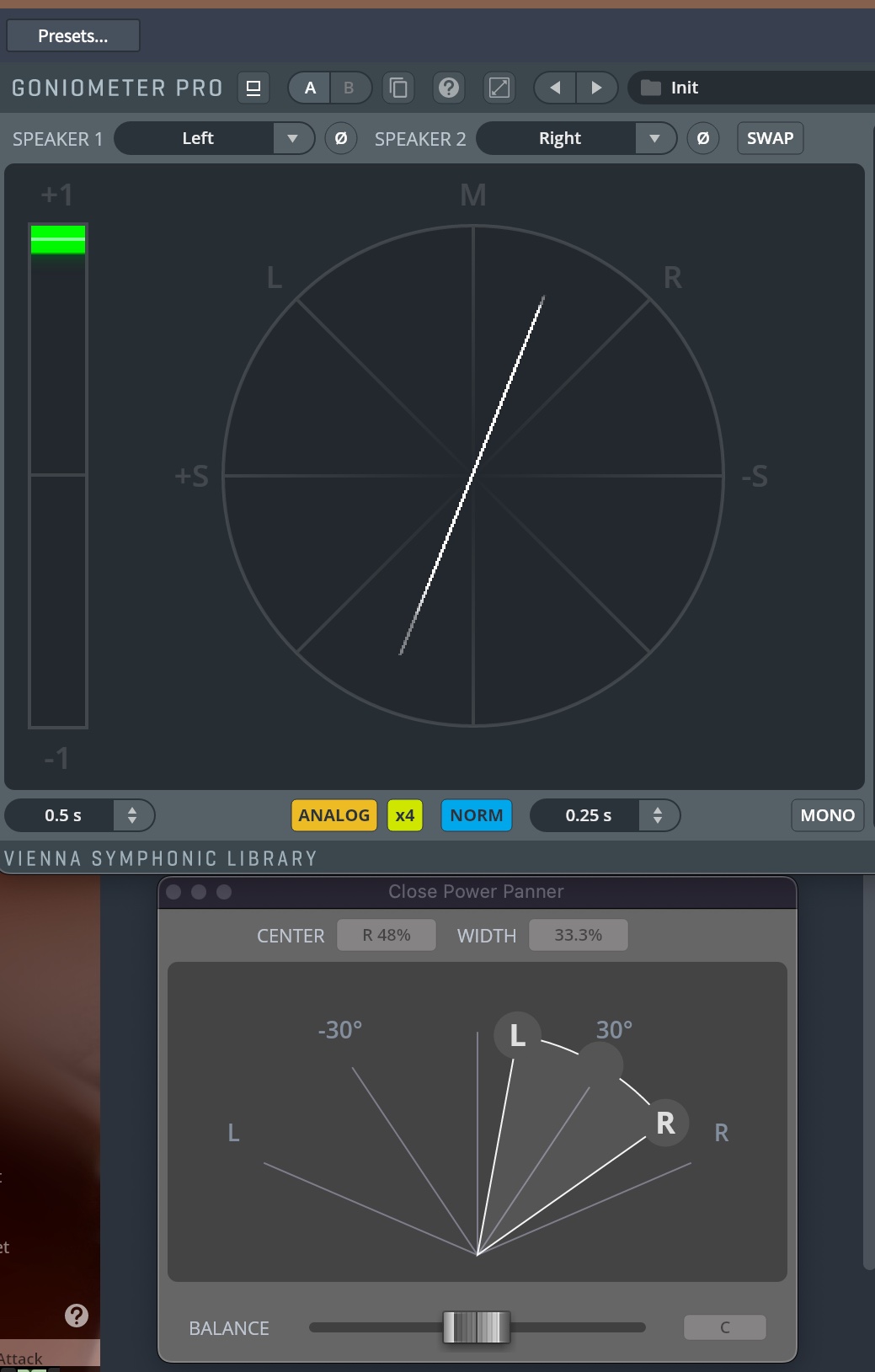@Pixelpoet1985 said:
Some questions:
- The close mic is a mono signal, but why it is narrowed in the mixer? In my opinion this "destroys" the sound. Why not pan it instead of narrowing and powerpanning? I compared with some other developers, and their close microphones sound different, more like a combination of close and mids, they are never that narrow.
- The same question for the mid microphones. But I think here it makes sense to narrow the stereo width.
- The decca C is a mono signal, too. Why isn't this narrowed then? In some of the percussion presets it is narrowed, though.
I know: “If it sounds good, it is good.” But I simply want to understand the microphones in the Synchron libraries. What would be a "normal" recording situation?
I often tend to use the "default" preset without any panning etc., even though I like the room mix most of the time. Except for the strings: They don't have these wide positioned outriggers (like brass and woodwinds), isn't it? On the microphone screenshots you can see that the surround microphones of strings and percussion are in the center instead on the sides. Is this true? So why do you pan the room mix by 20% and force them to be that wide? In my opinion, again, it "destroys" the sound and makes it dead.
The answers to your questions regarding miking depend on practice.
Example Decca Tree. This has 3 microphones, which are arranged in a triangle. Two to the side (L and R) and one microphone at the top of the triangle. This "tip" looks into the orchestra.
Because usually in the DECCA Tree arrangement the microphones are all about 2m away from each other, using only Right and Left would create an acoustic "hole" in the stereo center. Therefore, there is a third microphone in the center (Decca Center) that you mix in so that the (hole) is naturally filled. If you use only the Decca microphones L and R and add Decca C slowly you will notice what is meant.
---------------
Why mono and not stereo?
Basically, in orchestral recordings, the main (stereo) mikrophones are responsible in the front to record the main action. In order to be able to emphasize individual instruments (e.g. quieter or more distant instruments) better in the mix, you give the individual instruments spot (support-) microphones. If a sound source (of an instrument) sounds more or less punctual - e.g. an oboe - it makes little sense to support it in stereo. If it is a wider arrangement - e.g. a trumpet ensemble - then stereo support is quite appropriate. Moreover, something that is far away is more likely to sound mono than something that is in close proximity to the listener. I haven't checked, but presumably instruments farther away are probably more likely to be present only with a mono spot microphone.
Bad luck, of course, if you want to bring such a mono-supported instrument acoustically right up to the front. But even then you can add some of the room mics (DECCA L&R) so that again some stereo effect is present or use some extra reverb.
So the engineers at VSL didn't want to make it hard for you, but did it as they always do when they record orchestras. In a real orchestra recording, where everyone is playing at the same time, it adds that each microphone has a little bit of everything on it. Those are real problems.
----------------------------------------------
So if you want to place an instrument with the microphone settings at a certain place on stage, you can do that with the panner. If there is only a mono signal for "Close" or "Mid" the panner is no problem. With Decca (not Decca-C) or/and "Room" (proportion) you can move the instrument arbitrarily back and forth in depth. Even if it may not always sound perfect, you can hardly hear it later in the overall mix.
All the best
Beat

